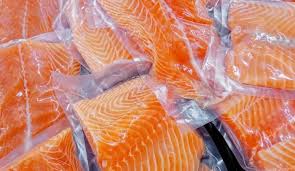
Breaking News
 BREAKING EXCLUSIVE: "This Wasn't Panic Buying Or Selling- IT WAS THEFT!"
BREAKING EXCLUSIVE: "This Wasn't Panic Buying Or Selling- IT WAS THEFT!"
 Somali Fraud is Miniscule Compared to Federal Reserve FRAUD
Somali Fraud is Miniscule Compared to Federal Reserve FRAUD
 Candace Owens Admits That Nevada Congressman Amodei Was Not Present...
Candace Owens Admits That Nevada Congressman Amodei Was Not Present...
 2025: The Year the Government Stopped Pretending It Cared About Freedom
2025: The Year the Government Stopped Pretending It Cared About Freedom
Top Tech News
 Laser weapons go mobile on US Army small vehicles
Laser weapons go mobile on US Army small vehicles
 EngineAI T800: Born to Disrupt! #EngineAI #robotics #newtechnology #newproduct
EngineAI T800: Born to Disrupt! #EngineAI #robotics #newtechnology #newproduct
 This Silicon Anode Breakthrough Could Mark A Turning Point For EV Batteries [Update]
This Silicon Anode Breakthrough Could Mark A Turning Point For EV Batteries [Update]
 Travel gadget promises to dry and iron your clothes – totally hands-free
Travel gadget promises to dry and iron your clothes – totally hands-free
 Perfect Aircrete, Kitchen Ingredients.
Perfect Aircrete, Kitchen Ingredients.
 Futuristic pixel-raising display lets you feel what's onscreen
Futuristic pixel-raising display lets you feel what's onscreen
 Cutting-Edge Facility Generates Pure Water and Hydrogen Fuel from Seawater for Mere Pennies
Cutting-Edge Facility Generates Pure Water and Hydrogen Fuel from Seawater for Mere Pennies
 This tiny dev board is packed with features for ambitious makers
This tiny dev board is packed with features for ambitious makers
 Scientists Discover Gel to Regrow Tooth Enamel
Scientists Discover Gel to Regrow Tooth Enamel
 Vitamin C and Dandelion Root Killing Cancer Cells -- as Former CDC Director Calls for COVID-19...
Vitamin C and Dandelion Root Killing Cancer Cells -- as Former CDC Director Calls for COVID-19...
No More 'Sniff Tests': Cheap Biodegradable Sensors Can Tell Smartphones When Food Has Gone B

In order to help detect spoilage and reduce food waste for supermarkets and consumers, researchers have developed new low-cost, smartphone-linked, eco-friendly spoilage sensors for meat and fish packaging.
One in three UK consumers throw away food solely because it reaches the "use-by" date, but 60% (4.2 million tonnes) of the £12.5 billion-worth of food we throw away each year is safe to eat.
The laboratory prototype sensors cost two US cents each to make. Known as "paper-based electrical gas sensors" (PEGS), they detect spoilage gases like ammonia and trimethylamine in meat and fish products.
The sensor data can be read by smartphones, so that people can simply hold their phone up to the packaging to see whether the food is safe to eat.
The Imperial College London researchers who developed PEGS crafted the sensors by printing carbon electrodes onto readily available cellulose paper. The biodegradable materials are eco-friendly and nontoxic, so they don't harm the environment and are safe to use in food packaging. The sensors are then combined with "near field communication (NFC)" tags—a series of microchips that can be read by nearby mobile devices.
During laboratory testing on packaged fish and chicken, PEGS picked up trace amounts of spoilage gases quickly and more accurately than existing sensors, at a fraction of their price.
The researchers, whose findings were published in ACS Sensors, say the sensors could also eventually replace the "use-by" date—a less reliable indicator of freshness and edibility. Lower costs for retailers may also eventually lower the cost of food for consumers.



